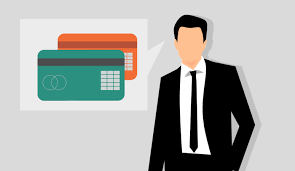Introduction
A credit card can be viewed as simply a plastic card holding money. However, there is a lot more to it than that given description. The card gives you the ability to loan money from the bank in order to buy things. Anything can be bought from clothing to food to entertainment items. The good news with a credit card is you don’t have to pay extra. If you don't pay under the required time a “grace period” will occur which takes twenty-five to thirty days. Then you will have to pay what you owe and interest as well.
Pros and Cons of Credit Cards
There are different pros and cons with credit cards. One pro is that a purchase worth a lot of money can be made and can get paid off it small amounts as time goes on. A con is that someone can get into debt easily if they are not wise about what they spend. Another pro is it is more suitable and secure to carry credit cards over a bunch of cash. On top of that credit cards over personal checks are more widely accepted. A con is that the simplicity of using a credit card could get into someone’s head and make them overspend.
A lot of credit cards have the ability to give their users rewards. This will then give them one percent or more of the money they spend. However, the factor of interest could cause a small debt to be bigger as time goes on. One more pro is that with a responsible utilization of a credit card, the credit can be built. This will serve the cards users well over time. However, if a payment is missed or a card is maxed out a card could be sinking the credit score very fast.
How Credit Card Companies make Money
There are three methods in which credit card companies make money. One of them is in the form of fees. Examples are annual or payment. An interest payment happens when the debt isn’t paid off in full. One more example is a transaction fee which gets charged to the merchant each time a user uses their credit card. In transaction fees only merchants need to be concerned about it. Regular credit card users should be concerned the fees and interest payments.
If a rewards credit card is used it should be remembered that those who issue cards don’t do it out of being generous. There is a thought by many that they get more in rewards than paid in interest. However, if a balance is carried, it is a rarity to be the case. Rewards cards should be steered clear if someone believes their balance will not get paid each month.
Fees
There are many fees charged by credit cards. Some that come to mind are late payment fees and annual fees ( as mentioned before) as well as cash payment fees. A majority of the cards today do not contain an annual fee only if they give out giant rewards or get designed for those with credit that is under good. However, somebody should be still sure to make the minimum monthly payment on time at least. This could help in avoiding a late fee and a larger interest fee. The credit score could sink down too. The application and marketing material for Credit cards are joined with something called a Schumer Box. This is a chart that informs users about the most vital information on the card.
Also if there is credit card debt a user can shift it over to a new card. There are some cards that allow you to shift debt and avoid interest from half a month to a year. However, there are others that can charge you the exact rate as regular purchasers.
An Annual fee is very straightforward, it is a fee paid to the credit card company to move over the product. However, they are popular on cards with rates that give out high rates. Cards given to people with credit that is average or bad has a likelihood to include a fee too.
There are two ways that come to mind on how you can have a charge disputed. One is by writing to an issuer at the address the statement indicates for “billing inquiries”. The address, name, description of the error, and account number should be included. Secondly, the letter should be sent quickly. This needs to arrive to the issuer in a span of sixty days after the issuer sent in the mail the first bill the error was in. The issuer would need to recognize the letter thirty days after getting it. It should also be resolved in ninety days or two business cycles.

